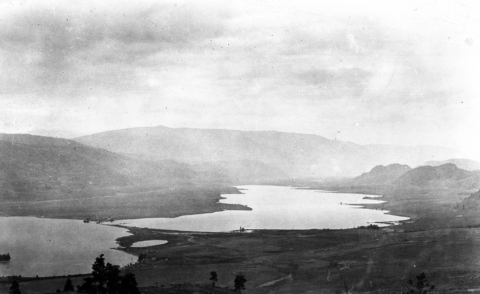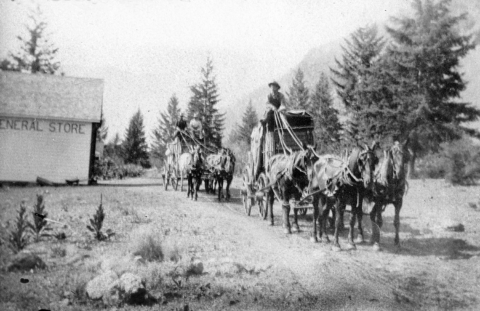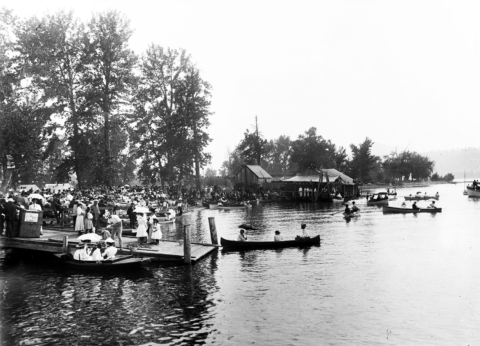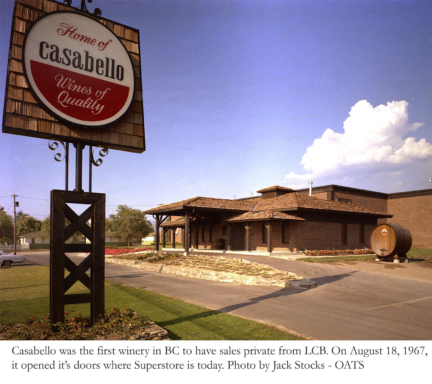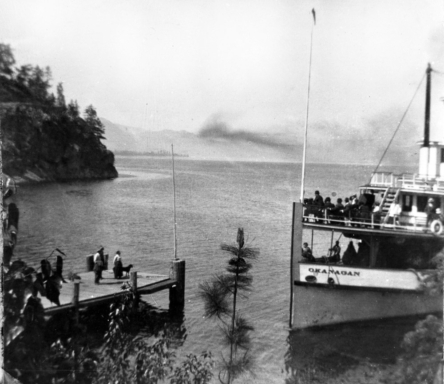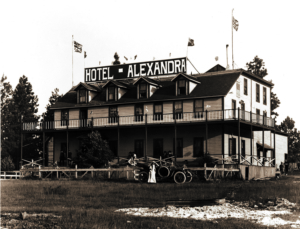
In 1906, Warwick Arnott came into a lot of money.
James Ritchie, Summerland lumber baron and developer, was desperate to buy Arnott’s property in what was to become Kaleden. Arnott and his brother didn’t have a lot invested in what they called “Stage Ranch”, having pre-empted the 360 acres for $2.50. What they did have was a profitable livery and team exchange frequented by freight haulers moving goods from Penticton to the gold mining town of Fairview.
(The road was particularly rough along the “Dog Lake” shoreline and it took a four horse team most of the day to haul a large freight wagon 20 miles from the wharf in Penticton to the corrals in Dog Town. Horses could to be changed at Krugers or at Stage Ranch.)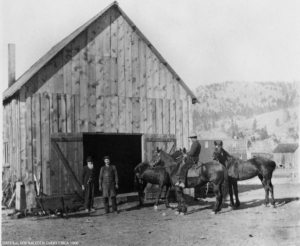
Warwick and James Ritchie settled on $1000 for the property, a small fortune in the day. Ritchie began building his Utopian community and Arnott was invited to join Bill Snodgrass in the building of Dog Town at the foot of Dog (Skaha) Lake.
One of the successful freight lines was owned by D.M. McDougall and Bill Hine. Warwick made McDougall an offer for his share and he accepted. Warwick drove team right up to the war years.
But he had all this money burning a hole in his pockets and old Snodgrass was about to leave the valley for Oregon after the death of his son. Snodgrass had a stopping house, livery and store in the area and Arnott was able to pick the property up quite cheap. The property included the partially constructed “Big Alex”.
The hotel was on the beach near what is now Rotary Park in Okanagan Falls. With all the traffic to Fairview going through the small town, it was a smart move to finish it off.
Snodgrass had several investors in the hotel who he called the Dog Town Syndicate. These investors had to be satisfied. Arnott and Hine turned to the few pioneers living in Dog Town and asked them to help out. Many came forward to complete the hotel. Pioneer names like Bassett, Mckinnon, McLelland, Keefe, Darragh, and Rood all pitched in to make the Alexandra a landmark.
Eric Sismey wrote in 1963 “It stood, white-painted, in a magnificent location, set back from a sand beach at the foot of Dog Lake. 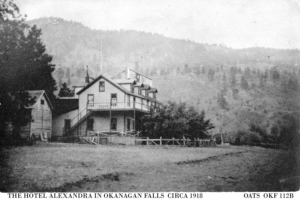 Many of the rooms faced north, offering a vista of the blue waters of the lake, nestled between grey-green hills that faded in the distance into the blue summer haze. The furnishings were lavish, in keeping with the anticipated development around the Falls and with the boom that extended across British Columbia.”
Many of the rooms faced north, offering a vista of the blue waters of the lake, nestled between grey-green hills that faded in the distance into the blue summer haze. The furnishings were lavish, in keeping with the anticipated development around the Falls and with the boom that extended across British Columbia.”
That development had been planned by W.J. Snodgrass in his dealings with Jim Hill, head of the Great Northern Railroad. Hill had his eyes on the gold, silver and copper deposits in the boundary area and was keen, with the co-operation of Snodgrass, to make Dog Town the terminus of several of his railways. This plan fell apart with the C.P.R. survey in Penticton in 1908. It became all about sovereignty. Fairview was able to haul ore to Oroville with the completion of the GN in 1907.
The day the Alex opened, October 2, 1908, one of the first to check in was the Governor General of Canada, Earl Grey accompanied by his aide Capt. Pickering. They were visiting J.M. Robinson in Naramata and were on a tour of Fairview and area.
For a short time the hotel featured “Bimbo the Bear”. This young black bear was captured by Bill Hine on a hunting trip and became the mascot of the Alex. Eventually, we imagine, Bimbo became bear stew.
When war was declared, Warwick and many others took the boat to Vernon and joined the B.C. Horse. He served 18 months in the trenches and was gassed. He remained in England after his recovery and became an instructor for gas warfare.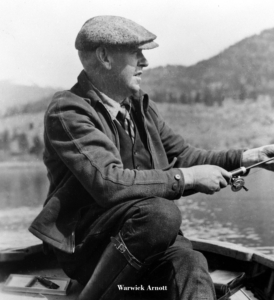
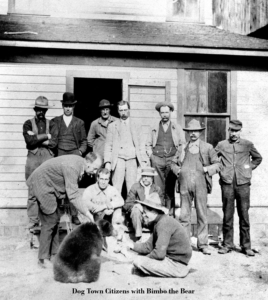 Within days of his return, he married Ellen Bassett, who he had courted prior to the war.
Within days of his return, he married Ellen Bassett, who he had courted prior to the war.
But Warwick could not adjust to the postwar world. He was particularly concerned with the introduction of prohibition in B.C. Things were tough enough without the loss of whisky revenues. The hotel fell on hard times.
He and Ellen decided to sell out and drive stage for awhile. Ellen’s father ran the Bassett mail stage to Oroville and was very supportive.
The Big Alex became empty and deserted. By the mid 1920s there was only a shell left of the majestic building and it was dismantled in 1928. The lumber was salvaged and used by the community to build the Community Hall. The hall was opened in 1929.
The hall is now a retail store called “The Red Barn”.
Research:
OHS Reports
Christie, J.R: The Story of Okanagan Falls 1958
Photos: Bassett Col. Ted Symonds
Daryl Waterman

